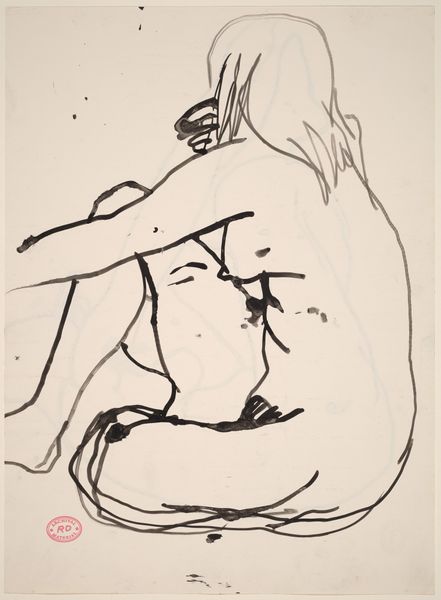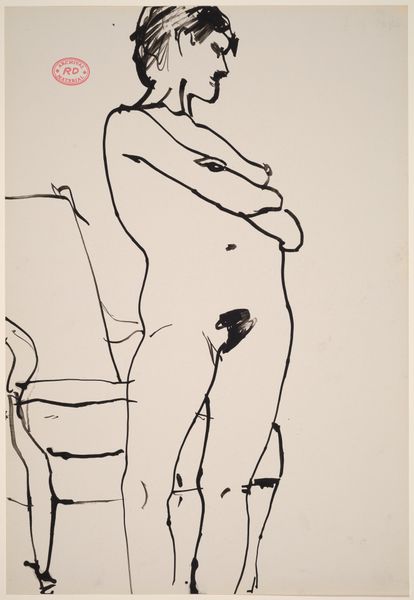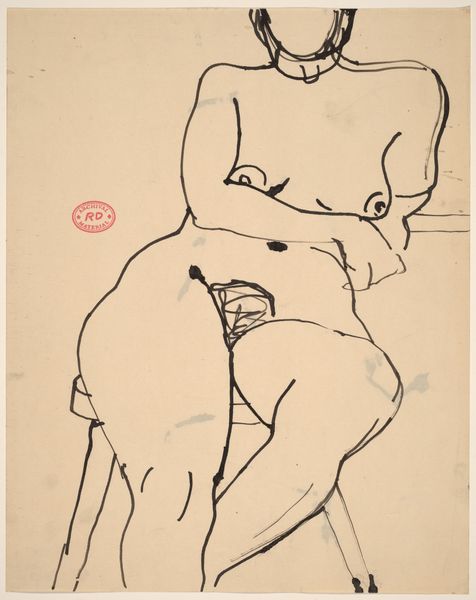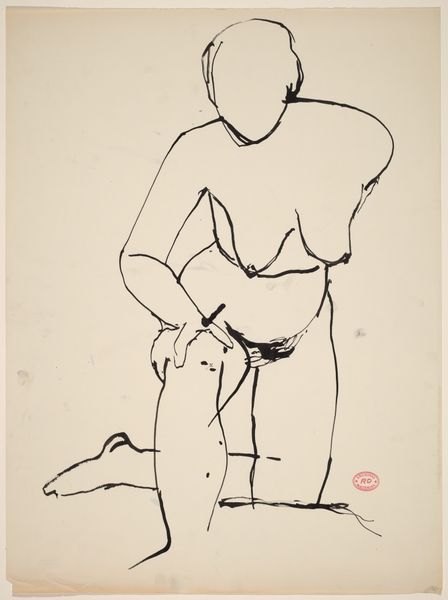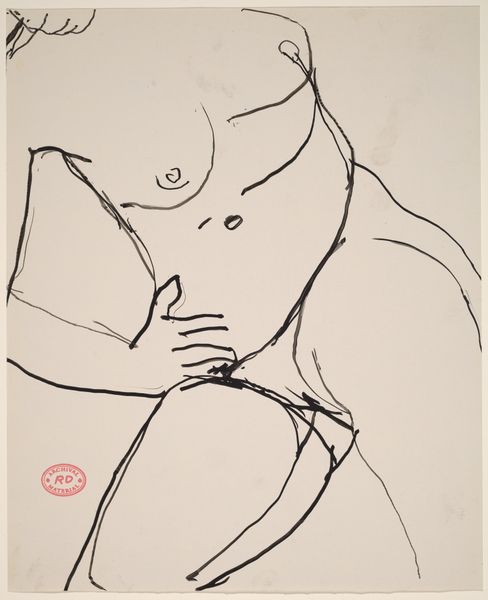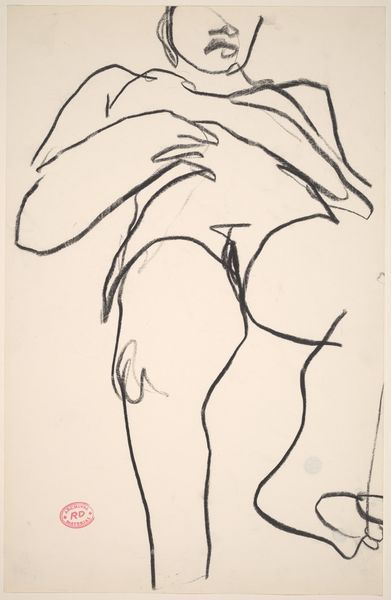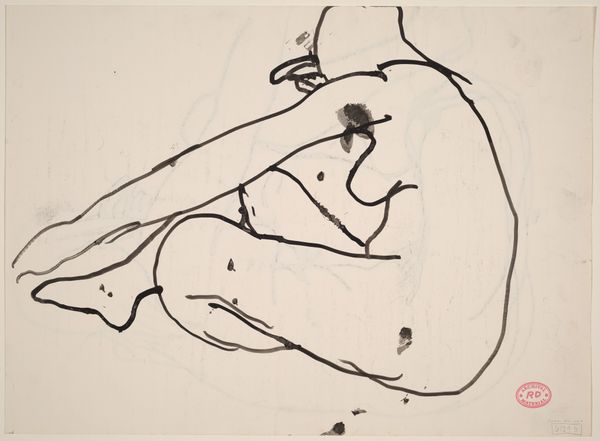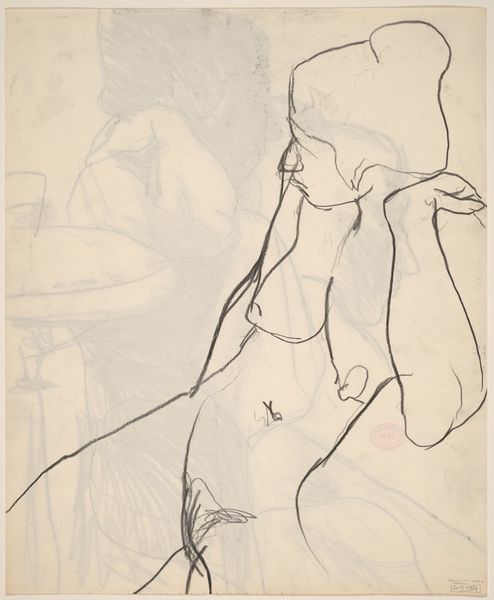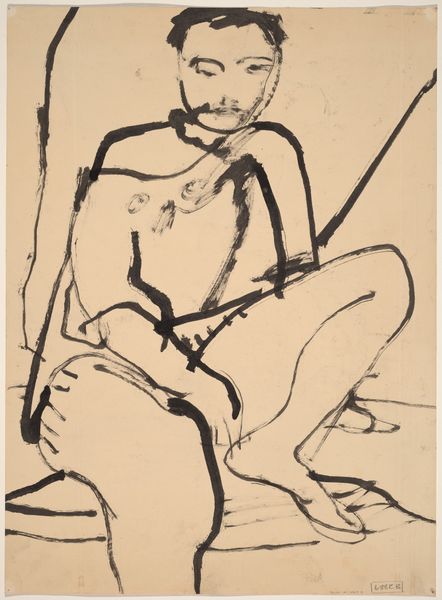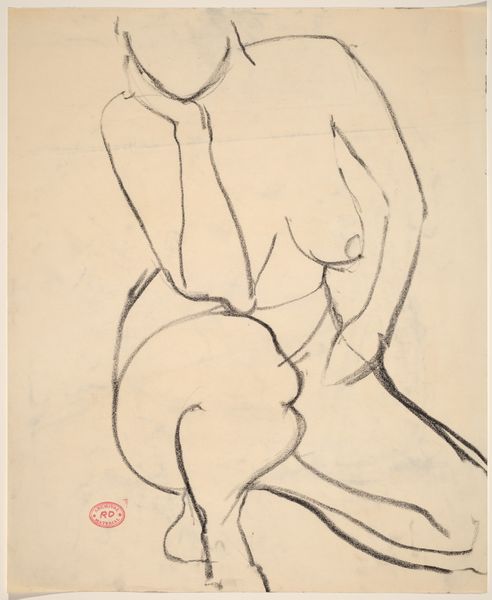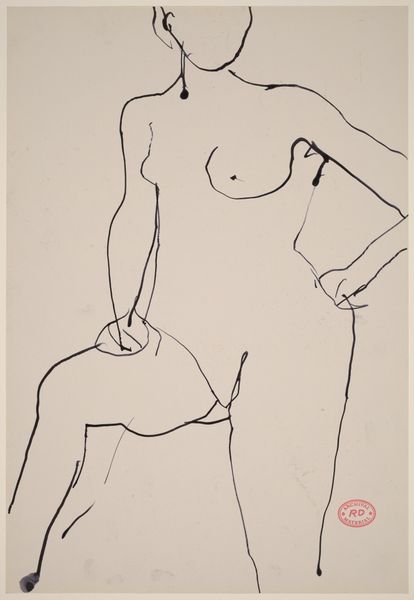![untitled [female nude holding cloth] [verso] by Richard Diebenkorn](/_next/image?url=https%3A%2F%2Fd2w8kbdekdi1gv.cloudfront.net%2FeyJidWNrZXQiOiAiYXJ0ZXJhLWltYWdlcy1idWNrZXQiLCAia2V5IjogImFydHdvcmtzLzk3ODYzM2M4LTg4MzQtNGNjMy1iNWI2LTQyNTZmYzI2NTIyMy85Nzg2MzNjOC04ODM0LTRjYzMtYjViNi00MjU2ZmMyNjUyMjNfZnVsbC5qcGciLCAiZWRpdHMiOiB7InJlc2l6ZSI6IHsid2lkdGgiOiAxOTIwLCAiaGVpZ2h0IjogMTkyMCwgImZpdCI6ICJpbnNpZGUifX19&w=3840&q=75)
drawing, ink
#
drawing
#
ink drawing
#
pencil sketch
#
figuration
#
bay-area-figurative-movement
#
ink
#
nude
Copyright: National Gallery of Art: CC0 1.0
Curator: Before us is an ink drawing by Richard Diebenkorn, created sometime between 1955 and 1967, entitled "untitled [female nude holding cloth] [verso]". Editor: Striking. The economy of line is masterful. It evokes a sense of vulnerability, almost a melancholy tenderness. It makes you think about ritual acts, about hiding and revealing, like the symbolism of a veil, yet simultaneously feeling unburdened through its minimal forms. Curator: Indeed, it's fascinating how Diebenkorn distills the essence of the figure with such sparse strokes. Note the strategic placement of the darker ink blots, they seem to ground the figure, creating points of visual anchor amid the fluidity of the lines. He offers us the most pared-down language, nearly approaching abstraction while maintaining figuration. Editor: It’s intriguing, this interplay between revelation and concealment, both in form and what the subject might suggest. The draped cloth has ancient roots, it could signify purity, but the woman’s averted face prevents a clear reading. Is it shame, introspection, or simple modesty we observe? Curator: Perhaps all. Diebenkorn has provided such openness with which to interpret the image. Consider how the chair is barely articulated, reduced to essential planes; we get the feeling of support and stability only from suggestions, yet they anchor the composition effectively, enabling us to focus more intensely on the figure itself. Editor: Looking closely at the draping cloth, I find myself reflecting on similar images of draped figures throughout art history – goddesses, nymphs, Muses. Diebenkorn invites us into a dialogue spanning centuries regarding women, the gaze, and societal narratives woven into visual language. It reminds us that imagery, though appearing timeless, always is viewed through the cultural perspectives of different times. Curator: Precisely. While some readings may occur, there is a sense of personal interpretation as Diebenkorn deliberately steers from direct classical invocation by means of reducing his forms to gestures alone, enabling it to maintain that crucial essence you speak of, unbound from overly rigid symbolism. Editor: Looking at it again, I realize that it also speaks to artistic process. The simplicity embodies its raw potential of human form as pure unburdened signifiers, it's almost like seeing an intimate glimpse in a mind of its creator. Curator: Absolutely, it feels deeply intimate, revealing of something essential about our perception of the human form. Editor: A provocative piece, reminding us that art transcends mere representation.
Comments
No comments
Be the first to comment and join the conversation on the ultimate creative platform.
